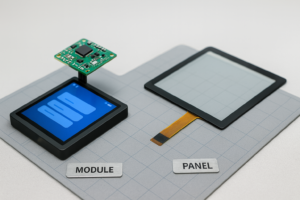In the modern healthcare sector, both medical monitors and commercial displays play crucial roles, yet they exhibit significant differences in design and performance. Understanding the differences between medical monitors vs commercial displays is vital for optimizing healthcare environments. This article will detail the distinctions and characteristics between medical monitors and commercial displays.
1. Safety Certifications
Medical monitors must comply with stringent quality control standards and certification requirements. These displays typically need certification from organizations such as the U.S. Food and Drug Administration (FDA) or the European Medical Device Directive (CE MDD). This ensures that medical monitors meet international healthcare standards for quality and performance, providing reliable clinical images. In contrast, commercial displays are not subjected to similar certification requirements and usually only need to meet general electronic product standards. This makes medical monitors more suitable for healthcare settings, as they offer higher credibility in image quality and stability.
2. Display Quality
Medical monitors are required to deliver high resolution, accurate color reproduction, and high contrast to ensure that doctors and healthcare professionals can view medical images—such as X-rays, CT scans, and pathology slides—accurately. This capability is essential for accurate diagnosis and treatment planning. Commercial displays, on the other hand, do not need to meet such high image quality standards, which may result in poorer performance in resolution, color accuracy, and contrast. Therefore, commercial displays are unsuitable for reliable analysis and diagnosis of medical images.
3. Dust and Water Resistance
Medical monitors are typically required to have an IP65 rating or higher for water and dust resistance, addressing potential exposure to liquid spills, disinfectants, and dust in medical environments. This design makes medical monitors more durable and capable of long-term use in demanding settings like hospitals.
4. Grayscale and Brightness Adjustment
Medical monitors generally feature a broader grayscale range to display more image details. Additionally, they often have a wider brightness range to accommodate various types of medical images, from X-rays to MRI scans. Commercial displays may not provide the same grayscale and brightness ranges, which can lead to loss or inaccurate display of medical images. This accuracy is critical in medical image diagnostics.
5. EMC Interference Resistance
Medical monitors often incorporate special shielding measures to reduce electromagnetic interference with medical equipment. This ensures accurate medical image display and prevents potential electromagnetic interference from affecting medical devices.
Conclusion
In summary, there are significant differences and characteristics between medical monitors and commercial displays. Medical monitors are specifically designed for the healthcare sector, meeting the demands for high quality, reliability, and safety. When choosing a display, healthcare institutions should keep these differences in mind to ensure that patient diagnosis and treatment are conducted accurately and reliably. While commercial displays may be more suitable for office and retail environments, extra caution must be taken when using them in medical settings to ensure they do not compromise the quality of diagnosis and treatment.
.png)



